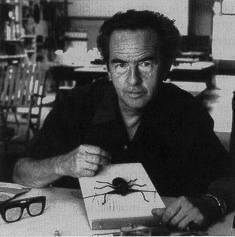
Jacques de Tonnancour
BIOGRAPHY
Born in Montreal, Quebec, Jacques de Tonnancour had an early interest in drawing. He found it difficult to choose between entomology and art as a career when he was 18. Although largely self taught he entered l’École des Beaux-Arts, Montreal in 1938 where he studied for three years until he rebelled against what he felt was “very academic teaching”. The tree, until 1962, has been an important source of subject matter for him, and his work has been discussed and widely reproduced in magazines, books, periodicals, newspapers, and on calendars. Unlike many landscape painters de Tonnancour has seldom painted on the spot excepting for the year he spent in Rio de Janeiro on a Brazilian government scholarship, 1945-6. Entomology was a life-long interest for Tonnancour and in 1982, he abandoned painting and teaching in order to devote his energies to collecting and photographing insects.
SUBJECT / THEMES
Jacques de Tonnancour stylistic development can be explained as follows : first his figure studies were influenced by Picasso and his landscapes by Goodridge Roberts (1940-45); then he worked directly from nature and abstracted plastic intensity from the physical universe (1945-6); next he concentrated on still lifes themes and figure studies under the influence of Picasso and Matisse (1946-50); by this time he felt too strongly influenced by Picasso and Matisse and stopped painting in 1950 almost completely until 1955 with the exception of a dozen or so canvases; then he was vey prolific and developed expensive, spidery landscapes (one was exhibited at the 1958 Venice Biennal) 1955-9; then he reduced his landscapes to simple planes of sky, and earth, against which he superimposed calligraphic trees smaller and more distant in setting (1958-9). He has taught at the Montreal Museum of Fine Arts but now teaches at the École des beaux-arts, Montreal. He was a Canadian delegate to the UNESCO Conference at Florence in 1950.Entomology was a life-long interest for Tonnancour and in 1982, he abandoned painting and teaching in order to devote his energies to collecting and photographing insects.
TECHNIQUE/MEDIUM
By the end of 1959 de Tonnancour had simplified his landscapes further by using a squeegee, which allowed further abstraction and reduction of his planular structure; a new phase of his work began when he started pressing paper onto the painted surface and lifting it off to achieve an impersonal pulled effect in 1962. He continued to develop new methods and to work with new materials. He sometimes spends six months on the one canvas, painting in the mornings and teaching in the afternoons. His canvases are dry for the start of each day and the next stage of their development.
COLLECTIONS
De Tonnancour is represented in the following collections: Montreal Museum of Fine Arts; Quebec Museum of Fine Arts, the Art Gallery of Ontario; the London Art Gallery, Ontario; the Hamilton Art Gallery; the Vancouver Art Gallery; the Winnipeg Art Gallery; the Lord Beaverbrook Art Gallery, Fredericton, N.B.; Hart House, Toronto; Queen’s University Art Gallery; University of British Colombia, and the National Gallery of Canada by several paintings including the well known “Sous-Bois” an outstanding study of green trees and grass.
Source : Colin S. MacDonald, A dictionary of Canadian artists, Volume 1, A-F, Canadian Paperbacks, Ottawa, 1977, p. 170-171.